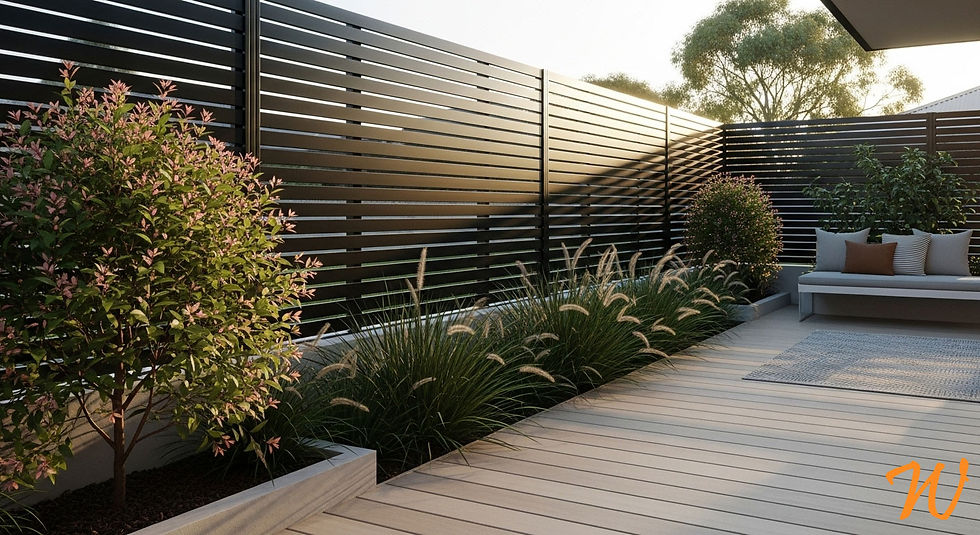Corrugated Iron Sheeting: The Durable Choice for Your Home
- saeid sharifzade
- Aug 12
- 4 min read
Updated: 6 days ago

In the world of Australian construction, corrugated iron sheeting is more than just a roofing material, it’s an iconic, time-tested solution that blends durability, affordability, and style. Whether you’re designing a sleek modern home, restoring a classic weatherboard, or developing a commercial site, this versatile product offers both practical and aesthetic advantages.
At Walnut, we’ve worked with homeowners, builders, and architects across Melbourne and regional Victoria to design and fabricate solutions using corrugated iron roof sheets that meet strict performance and design criteria.
You can listen to this blog here!
Why Corrugated Iron Sheeting Remains a Favourite in Australia
In a climate as varied as ours, materials need to handle everything from blazing summer sun to heavy winter rain. Corrugated iron sheeting excels here, thanks to its:
Weather resistance – Galvanised or coated finishes protect against rust and corrosion.
Strength-to-weight ratio – Light enough for easy handling yet strong enough to withstand high winds.
Versatility – Works for roofing, wall cladding, fencing, and even custom architectural features.
Design flexibility – Available in a range of profiles, colours, and corrugated iron sheet sizes to suit any project.
Understanding Corrugated Iron Sheet Dimensions
Choosing the correct corrugated iron sheet dimensions can make or break a project’s efficiency. In Australia, common corrugated iron sheet sizes follow standard manufacturing practices, but custom fabrication is possible for unique requirements.
Typical Dimensions in Australia:
Application | Common Length Range | Width of Corrugated Sheet | Profile Depth |
Roofing | 1.8m – 6.0m | 762mm | ~16–18mm |
Wall Cladding | 1.2m – 3.6m | 762mm | ~16–18mm |
Fencing Panels | 1.5m – 3.0m | 762mm | ~16–18mm |
While the width of a corrugated sheet often sits around 762mm, it’s important to note that the cover width (the part that overlaps) is slightly less. Walnut ensures every sheet is fabricated or cut to suit your exact site measurements, eliminating waste and installation headaches.

The Role of Sheet Sizes in Project Planning
When you know your corrugated iron sheet sizes Australia standards, you can:
Reduce cutting on site – Minimising labour time and material offcuts.
Improve weatherproofing – Fewer joins mean fewer potential leak points.
Achieve cleaner lines – Long, uninterrupted spans give a polished, professional look.
One of our recent residential projects in Geelong is a perfect example. The homeowners wanted a sleek, minimal roofline for their coastal retreat. We worked closely with the builder to select custom lengths of corrugated iron roof sheets to eliminate unsightly joins. The result? A watertight, visually striking finish that also reduced labour costs.
Factors Influencing the Price of Corrugated Iron Sheets
While we don’t list figures here, the price of corrugated iron sheets can be influenced by:
Material type – Zincalume, galvanised steel, or Colorbond-style coatings.
Thickness – Thicker sheets provide extra durability but weigh more.
Coatings and finishes – Specialty colours or anti-corrosion layers can extend lifespan.
Custom fabrication – Non-standard lengths or profiles may carry a higher production cost.
Investing in high-quality sheeting and correct installation pays off in the long term, with reduced maintenance and replacement needs.

Applications Beyond Roofing
Although many associate corrugated iron roof sheets with traditional roofs, the material’s uses extend far beyond that:
Fencing – Strong, rust-resistant panels for boundary or privacy fencing.
Gates – Lightweight but tough, ideal for both residential and industrial gates.
Interior features – Modern, industrial-style wall cladding for feature walls.
Pergolas – Weatherproof overhead covers that add style and function to outdoor spaces.
Why Work with a Specialist Like Walnut
Not all suppliers and installers offer the same precision or design knowledge. Our process is tailored to ensure you get the right corrugated iron sheet sizes for your project:
Consultation – We meet with you (or your builder/architect) to discuss design goals and performance needs.
Material selection – We advise on the best profile, coating, and corrugated iron sheet dimensions for your environment.
Fabrication – Our in-house team custom-cuts and finishes sheets for an exact fit.
Installation or delivery – Depending on your needs, we either install or deliver directly to your site.
Our clients appreciate that we take the guesswork out of the process. You get a product engineered for longevity, not just a generic sheet pulled from the rack.
Maintenance Tips for Long-Lasting Performance
To maximise the life of your corrugated iron sheeting:
Keep it clean – Wash down roof sheets and cladding periodically to remove debris and salt.
Inspect regularly – Look for any scratches, loose fixings, or early signs of corrosion.
Use compatible fixings – The wrong screws can cause galvanic corrosion.
Trim overhanging branches – Prevent abrasion or excessive shade that can encourage mould growth.
Final Thoughts
Corrugated iron sheeting has stood the test of time in Australian construction for good reason. With the right dimensions, coating, and installation, it’s a smart investment for any property owner – from suburban homeowners to large-scale commercial developers.
If you’re planning a project that demands precision, durability, and a clean, professional finish, Walnut can deliver exactly that. Our experience in custom fabrication ensures your corrugated iron roof sheets fit perfectly and perform flawlessly for years to come.
Contact Walnut today to discuss your project and discover how we can bring your vision to life with expertly crafted metal solutions.









Comments